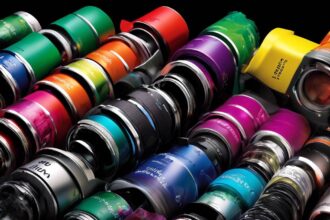Are you wondering how to approach asking for LinkedIn recommendations in a way that yields positive results?
Mastering the art of requesting endorsements can significantly enhance your professional profile and credibility, but where do you begin?
Understanding the key strategies and best practices can make all the difference in the outcome of your recommendation requests.
By following a few essential guidelines, you can navigate this process smoothly and increase your chances of receiving valuable endorsements that truly showcase your skills and expertise.
Timing of Recommendation Request
When considering the timing of your recommendation request on LinkedIn, evaluate the strategic moments that align with your professional milestones and accomplishments. The timing of your request plays a significant role in the authenticity and impact of the recommendation you receive. It's advisable to request recommendations after successful projects or during key feedback points like review cycles. Additionally, when you're leaving a job, it's an opportune time to ask for recommendations to capture recent achievements and contributions effectively.
Remember that the relationship you have with the recommender is crucial. Sudden requests for recommendations may be perceived negatively, so it's essential to consider the timing and the rapport you share with the individual you're reaching out to. By being mindful of when you request recommendations, you can enhance the quality and relevance of the testimonials on your LinkedIn profile. This strategic approach ensures that your request is well-received and that the resulting recommendations truly reflect your skills and accomplishments.
Selecting the Right Recommenders
To ensure impactful LinkedIn recommendations, carefully choose recommenders who can provide detailed insights into your skills and work. When selecting the right recommenders, aim for a diverse group including senior leaders, managers, team members, and clients. Look for individuals who can offer specific feedback about your abilities and work performance. It's crucial to trust recommenders to deliver thoughtful and thorough reviews that showcase your strengths effectively. Avoid vague or short responses by picking recommenders who can provide valuable insights into your professional capabilities.
Ensure that the recommenders you approach can offer a comprehensive view of your skills and contributions. This will help potential employers or connections on LinkedIn to gain a well-rounded understanding of your capabilities and strengths. By choosing recommenders who can provide detailed insights and specific feedback, you increase the likelihood of receiving high-quality and impactful recommendations that can enhance your professional profile.
Crafting Your Request Message
Dear [Recipient's Name],
I hope this message finds you well. As I continue to build my professional profile, I am reaching out to request a recommendation from you on LinkedIn. Your insights into my work would be invaluable as I pursue new opportunities in my career.
I greatly appreciate your time and consideration in writing this recommendation. If possible, could you please focus on my skills in project management and communication? I believe that highlighting these areas will provide a comprehensive view of my strengths in these key areas.
Additionally, if there are specific projects we have collaborated on that you feel showcase these skills, mentioning them would add depth to the recommendation. Your perspective would truly enhance my profile and help me stand out to potential employers.
I want to express my willingness to reciprocate by writing a recommendation for you as well. I believe in supporting each other's professional growth, and I value your contributions to our working relationship.
Thank you once again for your time and support. Your recommendation would mean a lot to me, and I look forward to the opportunity to return the favor.
Warm regards,
[Your Name]
Sample Email Templates
Utilizing sample email templates can streamline the process of requesting LinkedIn recommendations by providing a structured framework for your communication. These templates help you maintain a professional tone, express gratitude, and highlight specific skills effectively.
When crafting your request message, consider tailoring each template to the individual relationship you have with the potential recommender. By using these templates, you can ensure that your communication is clear, concise, and appreciative.
Start your email by expressing your gratitude for the recipient's time and consideration. Then, mention the specific skills or experiences you'd like them to focus on in the recommendation. Offer to reciprocate the favor if they ever need a recommendation as well.
Following Up on Recommendations
When following up on recommendations, demonstrate professionalism and show interest in the feedback received. Providing examples or drafts for recommenders can facilitate the recommendation process, making it easier for them to craft a personalized and detailed recommendation.
Additionally, writing a recommendation for the recommender can encourage reciprocity and strengthen your professional relationships. Offering help in return, such as endorsing their skills or promoting their work, can further solidify your connection. By encouraging reciprocal recommendations, you create a supportive networking environment where both parties benefit from each other's endorsements.
Conclusion
Now that you have the tools and tips for asking for LinkedIn recommendations, don't hesitate to reach out to your network.
Remember to be direct, specific, and courteous in your request. Choose recommenders who can speak to your skills and experiences, and offer to reciprocate.
With a well-crafted message and follow-up, you'll be on your way to building a strong professional profile. Good luck!









